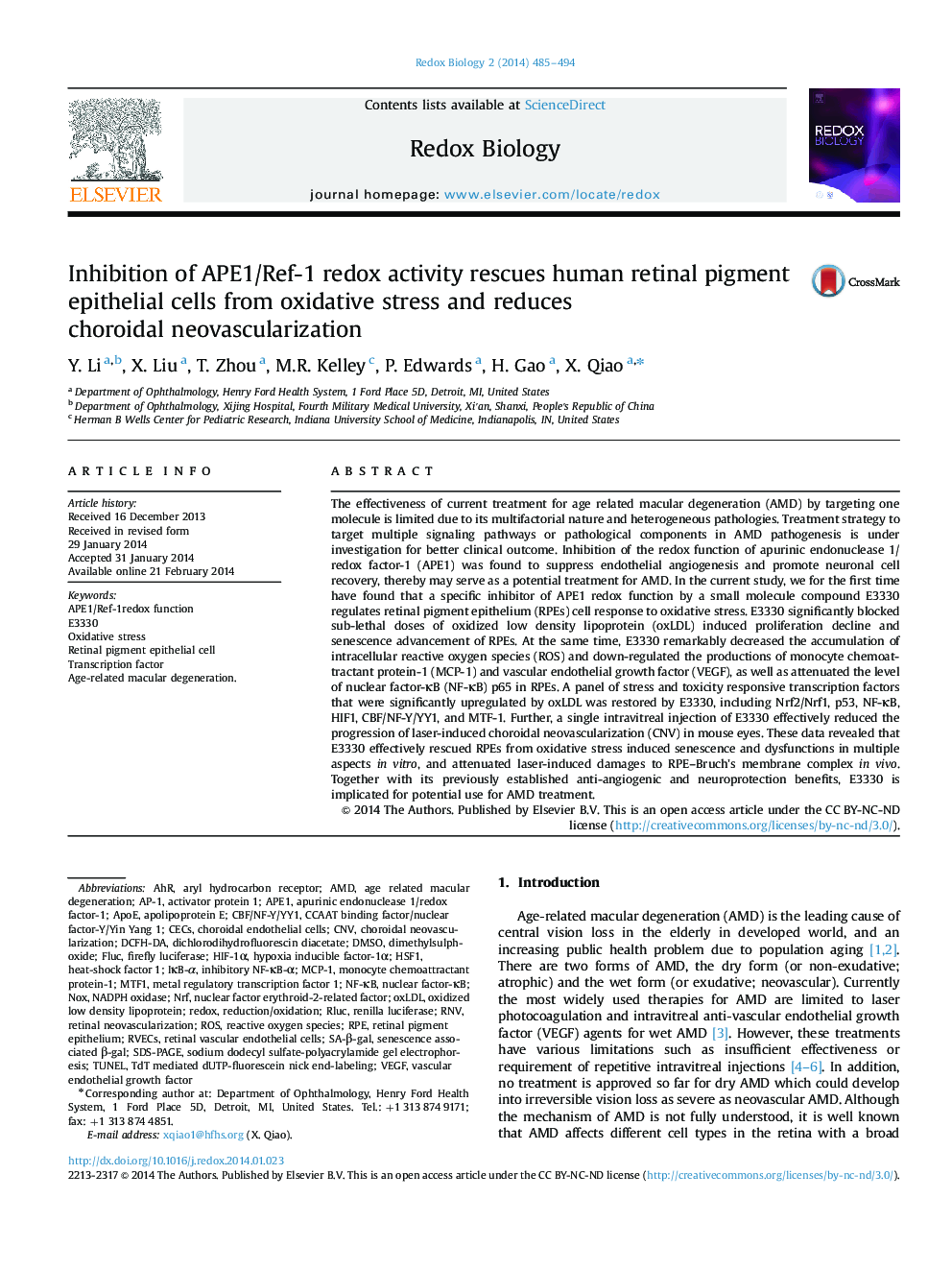| کد مقاله | کد نشریه | سال انتشار | مقاله انگلیسی | نسخه تمام متن |
|---|---|---|---|---|
| 1923036 | 1535848 | 2014 | 10 صفحه PDF | دانلود رایگان |

• Specific inhibition of APE1/Ref-1 redox function with E3330 blocked RPE proliferation decline and senescence-like phenotype advancement induced by oxLDL.
• E3330 suppressed intracellular ROS, down-regulated the MCP-1 and VEGF production, and reduced nuclear NF-κB p65 in RPEs.
• E3330 repressed the redox sensitive transcription factors Nrf2/Nrf1, p53, NF-κB, HIF1, CBF/NF-Y/YY1, and MTF-1 that stimulated by oxLDL in RPEs.
• Intravitreal injection of E3330 markedly reduced the laser-induced CNV in mouse eyes.
• E3330 holds great potential for the management of AMD.
The effectiveness of current treatment for age related macular degeneration (AMD) by targeting one molecule is limited due to its multifactorial nature and heterogeneous pathologies. Treatment strategy to target multiple signaling pathways or pathological components in AMD pathogenesis is under investigation for better clinical outcome. Inhibition of the redox function of apurinic endonuclease 1/redox factor-1 (APE1) was found to suppress endothelial angiogenesis and promote neuronal cell recovery, thereby may serve as a potential treatment for AMD. In the current study, we for the first time have found that a specific inhibitor of APE1 redox function by a small molecule compound E3330 regulates retinal pigment epithelium (RPEs) cell response to oxidative stress. E3330 significantly blocked sub-lethal doses of oxidized low density lipoprotein (oxLDL) induced proliferation decline and senescence advancement of RPEs. At the same time, E3330 remarkably decreased the accumulation of intracellular reactive oxygen species (ROS) and down-regulated the productions of monocyte chemoattractant protein-1 (MCP-1) and vascular endothelial growth factor (VEGF), as well as attenuated the level of nuclear factor-κB (NF-κB) p65 in RPEs. A panel of stress and toxicity responsive transcription factors that were significantly upregulated by oxLDL was restored by E3330, including Nrf2/Nrf1, p53, NF-κB, HIF1, CBF/NF-Y/YY1, and MTF-1. Further, a single intravitreal injection of E3330 effectively reduced the progression of laser-induced choroidal neovascularization (CNV) in mouse eyes. These data revealed that E3330 effectively rescued RPEs from oxidative stress induced senescence and dysfunctions in multiple aspects in vitro, and attenuated laser-induced damages to RPE–Bruch׳s membrane complex in vivo. Together with its previously established anti-angiogenic and neuroprotection benefits, E3330 is implicated for potential use for AMD treatment.
Figure optionsDownload as PowerPoint slide
Journal: Redox Biology - Volume 2, 2014, Pages 485–494